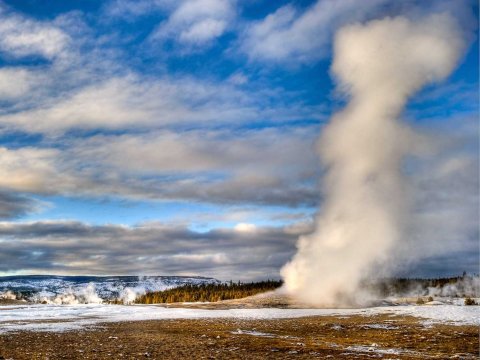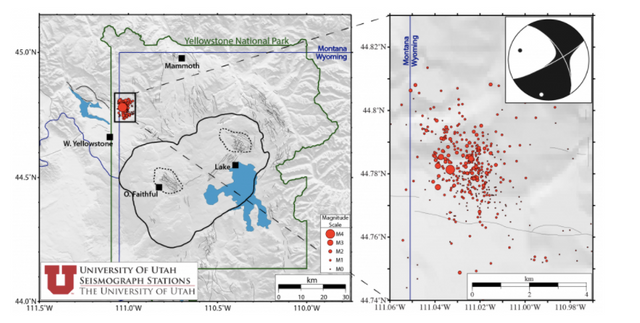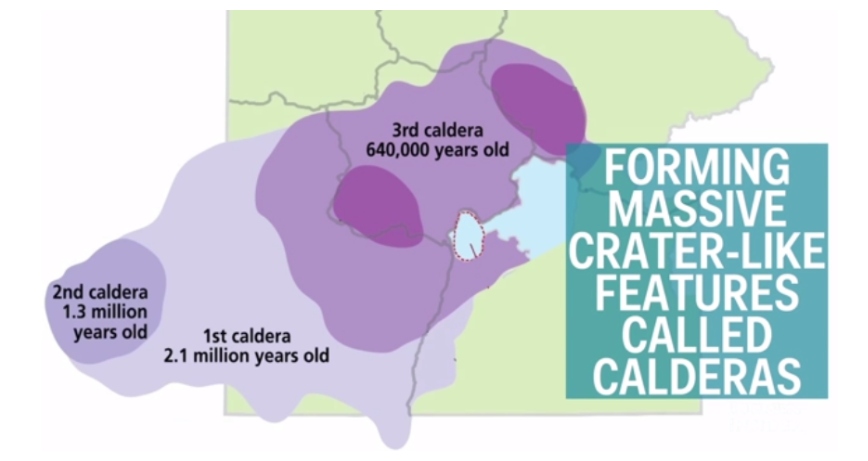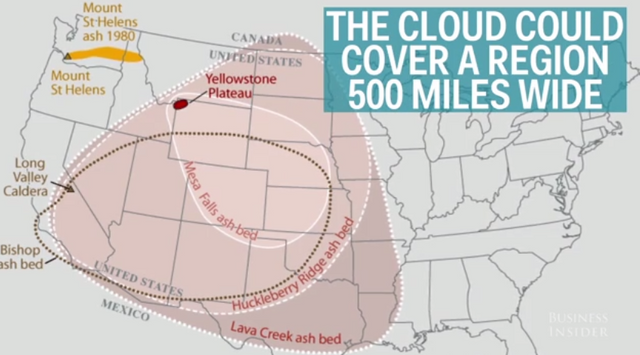A deadly supervolcano lies under Yellowstone — here's what would happen if it erupted

Yellowstone National Park is best known for its Old Faithful geyser and its stunning wildlife.
But the national park also sits atop a super volcano, simmering just under the surface. You can see some of the evidence of its active state in the hydrothermal activity that bubbles up, including Old Faithful, which shoots water every few hours.
Between June 12 and June 19, Yellowstone experienced an earthquake swarm of 464 events, the majority of which were magnitude 1 or below. The University of Utah, which monitors seismic activity in Yellowstone, noted that these swarms are common.
"This is the highest number of earthquakes at Yellowstone within a single week in the past five years, but is fewer than weekly counts during similar earthquakes swarms in 2002, 2004, 2008 and 2010," scientists from the university told the Star Valley Independent in a statement

What is a supervolcano?
Super volcanos are characterized as volcanic centers that have had eruptions that covered more than 240 cubic miles. The US has two: one at Yellowstone and another at Long Valley in California.
Yellowstone has had three major events in the past 2.1 million years, which led to the creation of the calderas, or large volcanic craters.

It has been hundreds of thousands of years since a major volcanic eruption. The last one was about 174,000 years ago, and it led to the West Thumb Geyser Basin, which extended the Yellowstone Lake.
What would happen if it were to erupt again?
Scientists don't think Yellowstone's supervolcano would be erupting any time soon (at least not in the next thousand years). The odds of it erupting within a given year are one in 730,000, according to the US Geological Survey. So if you're planning a trip there, you shouldn't be too concerned.
If it did erupt, it could have some pretty extreme effects on the surrounding areas.
For starters, the eruption could emit ash that would expand over 500 miles (seen below). For comparison, this map shows the area that the Mount St. Helens' 1980 eruption ash reached.

Molten lava more than 1,000 degrees oozing from an eruption might be less of a concern than the ash. The eruption would likely cover the ground with as much as 4 inches of gray ash, which could be detrimental to crops growing in the Midwest.
Along with the ash, the supervolcano would spew a whole bunch of gasses, including sulfur dioxide, a gas that can lead to acid rain as well as global cooling as it reflects the sun away from the Earth.
The explosion likely wouldn't wipe out human life, but it certainly would be destructive, especially to the western half of the US.
In the meantime, researchers are keeping a close watch on Yellowstone to check for warning signs that an eruption might be underway.
Credits:Lydia Ramsey
Follow: @highme
That will be the day....the day I die!
Beyond the devastation to those who live closest to the eruption, it would change the world's climate for several years.
However, Yellowstone erupting is low on the Doomsday Scenario list, because there hasn't been any significant build-up that would be visible with the ground rising significantly.
Yes I do agree on the ground rising, but need to take in count hundreds of small quakes, number of which have increases in past few month few times fold to compare with several past years
From your own posts. This had been going on for years at around the same time.
Small quakes actually relieve pressure and possibly prevent a larger quake from happening.
Besides the direct fallout from ash, I'd be concerned about ejecta from the actual explosion itself. Apparently there have been reports of finding yellowstone rocks as far east as Virginia.
That's a very sobering thought, but given the magnitude of such an eruption, not entirely out of the realm of possibility. The ejected mass of particles would also cool the earth for a short time before natural processes washed them out of the atmosphere.
I'd also imagine that the West coast would be isolated, since flying through that ash cloud is not something conventional jet airplanes are suited for. (Not any aircraft are really, due to the small size of the particles and their damaging effects to their engines.)
It would be a catastrophe, but ultimately survivable. Provided you weren't in the immediate blast radius and evacuated before the ash started to accumulate in large drifts.